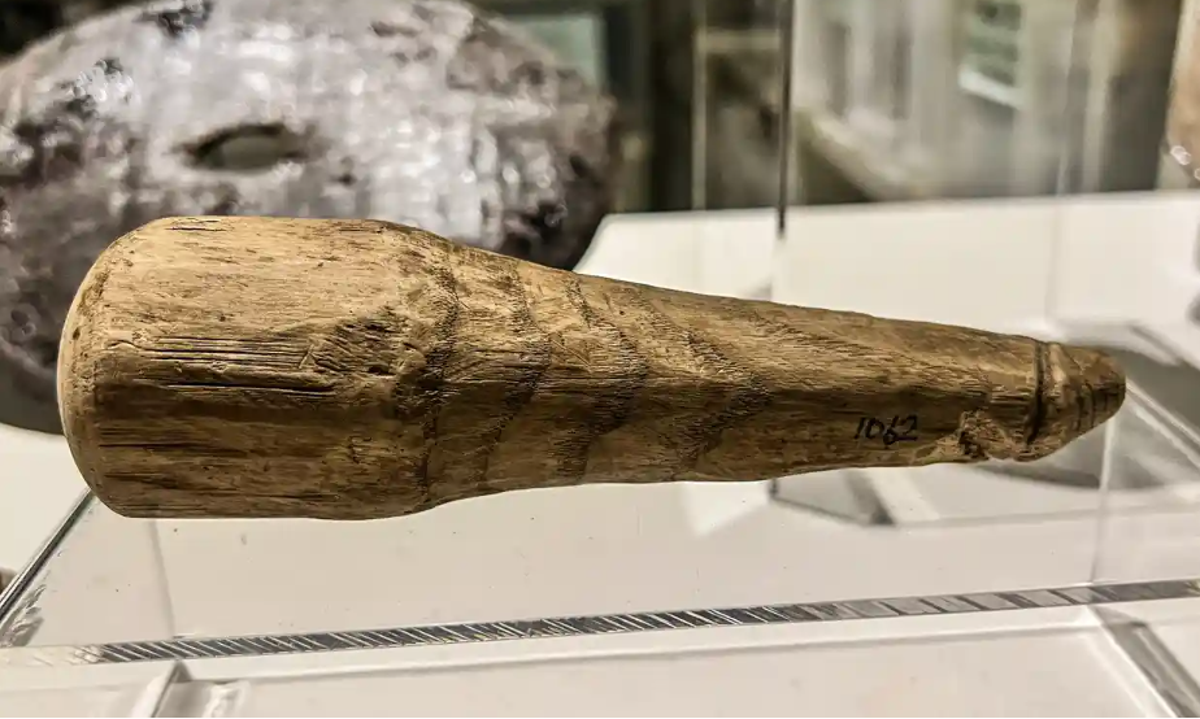
A two-thousand-year-old object discovered in Northumberland in 1992 has been reassessed only to find it’s not a darning tool as originally believed.
Archaeologists think they have found the only known, lifesize Roman dildo.
It is either a sexual implement or, archaeologists, say, it could be a penis-shaped pestle or even an object from a statue which Roman people would have touched for good luck.
It definitely isn’t what it was first catalogued as when it was found in the early nineties - a darning tool.
The object was discovered in a Northumberland ditch in the Roman fort of Vindolanda on the very northern fringes of the Roman empire.
Senior lecturer in archaeology at Newcaste University, Rob Collins, told The Guardian: “I have to confess part of me thinks it’s kind of self-evident that it is a penis.
“I don’t know who entered it into the catalogue. Maybe it was somebody uncomfortable with it or didn’t think the Romans would do such silly things.”
Objects representing phalli were very common during Roman times, and could often be seen in mosaics, frescoes, on pots or as part of pendants designed to be worn around the neck.
The phallus found in Northumberland measures 16cm, although experts say it was likely longer originally as wood is prone to shrinking over time.
Researchers from the Universities of Newcastle and Dublin say whatever it actually was, it’s the first wooden, disembodied phallus from the Roman world that’s been found.
It was discovered alongside dress accessories, shoes and waste products from crafting, such as leather off-cuts, which is possibly why it was initially thought to be a darning tool.

Mr Collins said it’s an unusual discovery because it’s the first life-sized phallus found - those recovered previously have been miniature.
It’s also unusal that it’s made of wood and has lasted this long as usually it would have broken down over a long period of time.
The expert added that usually archaeologists can deduce what an object found would have been used for quite easily by looking at the size, shape and materials used for it, but it hasn’t been the case this time.
He added that the team working on it have had some “very interesting discussions”.
The smooth end of the phallus suggests it was used for something over a period of time, according to archaeologists.
Phallic objects were used for warding off evil during Roman times.
In the end, the team came up with three possible uses the object could have had, which have been outlined and published in the journal Antiquity.
Mr Collins said it may have been used for sexual reasons or what we might call a sex toy, but there is no certainty about this.
The expert added that dildos weren’t always used for pleasure so we must be cautious about using the term sex toy. They were sometimes implements of torture.
He said that if it was a dildo, it “would be, to our knowledge, the first Roman dildo that’s been encountered from archaeology”.
“We know from Greek and Roman poetry and Greek and Roman art that they used dildos,” he continued.
The second theory is that the object found is a pestle, perhaps for cooking purposes or to grind medicine or cosmetics. Its size suggests it would have been easy to use as this type of instrument.
Finally, one theory is it could have been an object which slots into a statue which those walking by would have touched for good luck.
Romans also believed that touching objects like this would lead the individual to absorb or activate any protection from misfortune. These types of objects were common in the Roman empire.
This said, these types of statues would usually have been placed near doors or entrances, but the fact the object has lasted so well suggests it was firmly inside, protected from the weather.
While no final conclusion has been met, the discovery of the object has prompted excitement. The hope is that it will lead to searches for similar objects among other collections.
The phallus is now on display in the Vindolanda museum in Northumberland.







